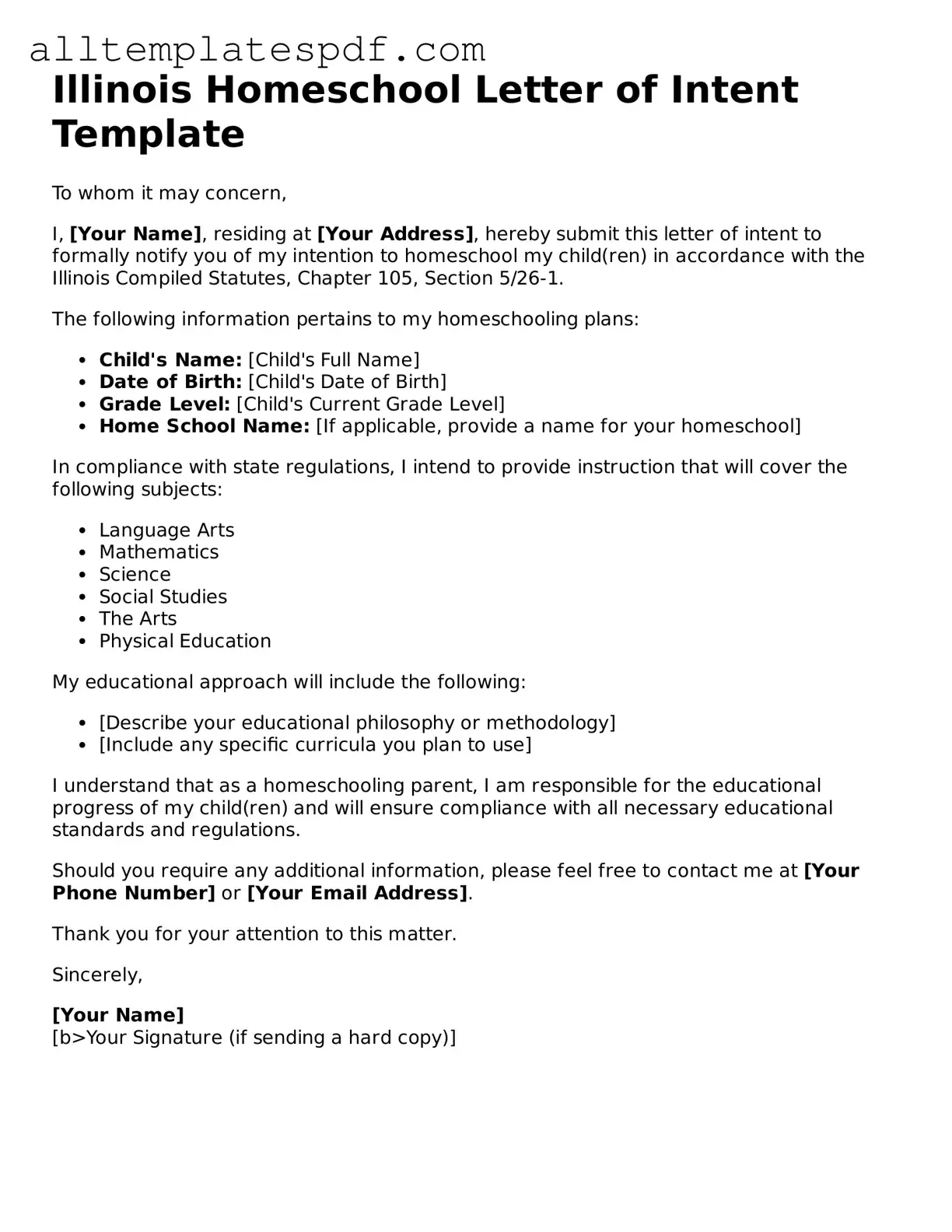Filling out the Illinois Homeschool Letter of Intent form can be a straightforward process, but many families make common mistakes that can lead to complications. One frequent error is not including all required information. The form asks for specific details about the student, including their name, age, and the address of the homeschooling location. Omitting any of these details can delay the approval process.
Another mistake is failing to sign and date the form. It might seem trivial, but without a signature, the form is incomplete. This simple oversight can result in the form being returned or rejected, causing unnecessary delays in starting your homeschooling journey.
Some families also forget to check for accuracy in their information. Typos or incorrect details can lead to confusion and may require resubmission. Double-checking all entries before submitting can save time and effort in the long run.
Additionally, people sometimes overlook the requirement to submit the form within the specified time frame. In Illinois, you must file the Letter of Intent within 14 days of beginning your homeschooling. Missing this deadline can create complications and may affect your homeschooling status.
Another common error is not keeping a copy of the submitted form. Maintaining a record is crucial. In case of any questions or issues later on, having a copy can provide clarity and support your homeschooling efforts.
Some families also misunderstand the purpose of the form. The Letter of Intent is not an application for approval but rather a notification to the school district. Misinterpreting its function can lead to unnecessary anxiety about the process.
Moreover, individuals sometimes fail to update their Letter of Intent when there are changes in the homeschooling situation. If a student moves, changes curriculum, or if there is a change in the educational plan, it’s important to notify the school district accordingly.
Lastly, not seeking assistance when needed can be a significant mistake. Many resources are available for families navigating the homeschooling process. Reaching out for guidance can help ensure that the form is filled out correctly and in compliance with state laws.
